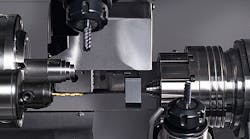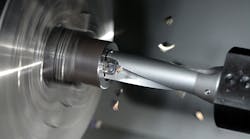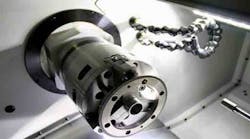U.S. manufacturers increased their cutting tool consumption to $156.48 million during December 2015, up 1.4% from November, but down 15.4% versus the December 2014 consumption total. The new data pushed total 2015 cutting tool consumption to $2.135 billion, down 5.0% compared to the 12-month total for 2014.
Cutting tool consumption is an indicator of manufacturing activity, because cutting tools are “the primary consumable (product) in the manufacturing process,” according to the U.S. Cutting Tool Institute (USCTI) and AMT - the Association for Manufacturing Technology, who present the monthly Cutting Tool Market Report (CTMR.)
Data in the CTMR is based on actual totals reported by participating companies, and represents the majority of the U.S. market for cutting tools.
The CTMR differs from the AMT’s monthly U.S. Manufacturing Technology Orders (USMTO) report, which is an indicator of manufacturers’ future activity as expressed by their capital investment plans. Recently, the USMTO showed orders for new machine tools also improved from November to December, but the full-year total for new orders was down 17.4% compared to 2014.
“The December '14 to December '15 decrease of 15.4% is most reflective of the current environment in the cutting tool industry,” commented U.S. Cutting Tool Institute president Steve Stokey. “We started 2015 strong with a significant decline during the second half of the year. The drop in oil prices, which softened the market, along with the strengthening dollar caused a dramatic decrease in demand in the last half of 2015.”
AMT has forecast a slow recovery for machine tool orders in 2016, largely because of weak demand in energy sectors and the weak U.S. currency’s influence on import and export activity.
“The strengthening dollar has been a very strong headwind facing U.S. manufacturers,” according to William A. Strauss, senior economist and economic advisor to the Federal Reserve Bank of Chicago. “The real value of the trade-weighted dollar has increased nearly 20% in the past year and a half. This has caused U.S. goods to be 20% more expensive on average to foreign consumers, and vice versa, imports are now 20% less expensive to U.S. consumers. This has led to a substantial increase in the trade deficit over the same time period.”











